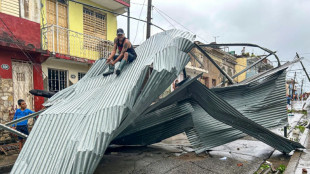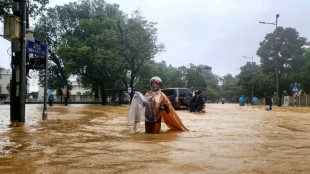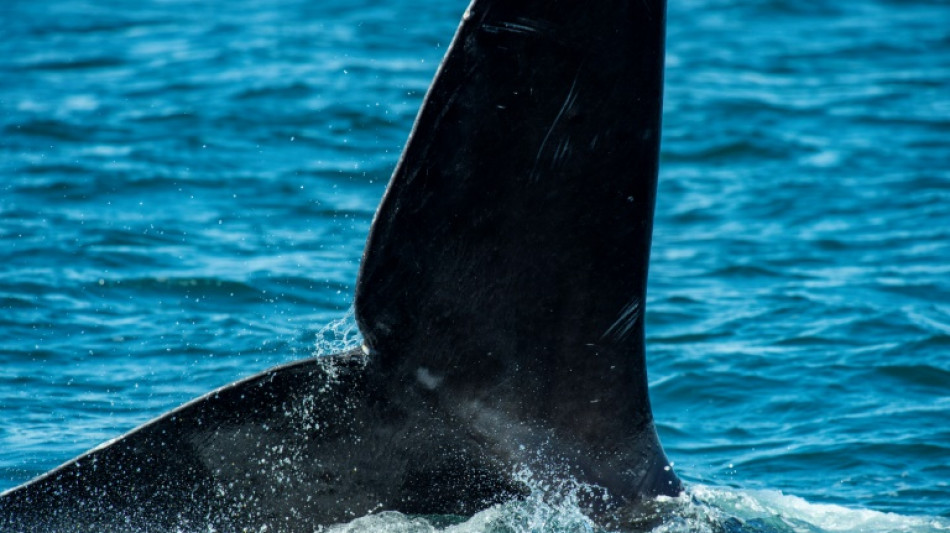
-
 Asia markets fluctuate as investors mull Trump-Xi talks
Asia markets fluctuate as investors mull Trump-Xi talks
-
Trump, Xi ease fight on tariffs, rare earths

-
 Volkswagen posts 1-billion-euro loss on tariffs, Porsche woes
Volkswagen posts 1-billion-euro loss on tariffs, Porsche woes
-
'Fight fire with fire': California mulls skewing electoral map

-
 Fentanyl, beans and Ukraine: Trump hails 'success' in talks with Xi
Fentanyl, beans and Ukraine: Trump hails 'success' in talks with Xi
-
'Nowhere to sleep': Melissa upends life for Jamaicans
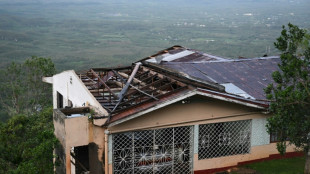
-
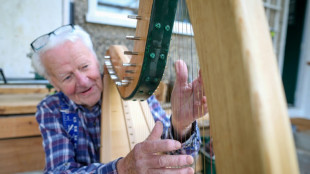 Irish octogenarian enjoys new lease on life making harps
Irish octogenarian enjoys new lease on life making harps
-
Tanzania blackout after election chaos, deaths feared

-
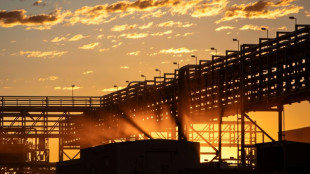 G7 meets on countering China's critical mineral dominance
G7 meets on countering China's critical mineral dominance
-
Trump hails tariff, rare earth deal with Xi

-
 Court rules against K-pop group NewJeans in label dispute
Court rules against K-pop group NewJeans in label dispute
-
India's Iyer says 'getting better by the day' after lacerated spleen

-
 Yesavage fairytale carries Blue Jays to World Series brink
Yesavage fairytale carries Blue Jays to World Series brink
-
Bank of Japan keeps interest rates unchanged

-
 Impoverished Filipinos forge a life among the tombstones
Impoverished Filipinos forge a life among the tombstones
-
Jokic posts fourth straight triple-double as Nuggets rout Pelicans

-
 UN calls for end to Sudan siege after mass hospital killings
UN calls for end to Sudan siege after mass hospital killings
-
Teenage Australian cricketer dies after being hit by ball
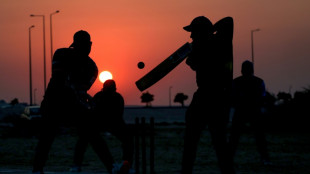
-
 As Russia advances on Kupiansk, Ukrainians fear second occupation
As Russia advances on Kupiansk, Ukrainians fear second occupation
-
Trade truce in balance as Trump meets 'tough negotiator' Xi
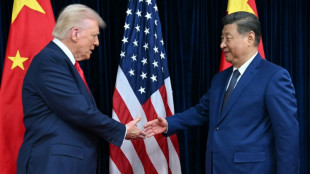
-
 China to send youngest astronaut, mice on space mission this week
China to send youngest astronaut, mice on space mission this week
-
Yesavage gem carries Blue Jays to brink of World Series as Dodgers downed

-
 With inflation under control, ECB to hold rates steady again
With inflation under control, ECB to hold rates steady again
-
Asia stocks muted with all eyes on Trump-Xi meeting

-
 Personal tipping points: Four people share their climate journeys
Personal tipping points: Four people share their climate journeys
-
Moto3 rider Dettwiler 'no longer critical' after crash: family

-
 US economy in the dark as government shutdown cuts off crucial data
US economy in the dark as government shutdown cuts off crucial data
-
Trump orders nuclear testing resumption ahead of Xi talks

-
 'Utter madness': NZ farmers agree dairy sale to French group
'Utter madness': NZ farmers agree dairy sale to French group
-
Samsung posts 32% profit rise on-year in third quarter
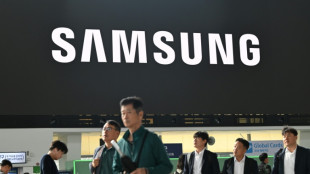
-
 30 years after cliffhanger vote, Quebec separatists voice hope for independence
30 years after cliffhanger vote, Quebec separatists voice hope for independence
-
Taxes, labor laws, pensions: what Milei wants to do next

-
 South Sudan's blind football team dreams of Paralympic glory
South Sudan's blind football team dreams of Paralympic glory
-
US says 4 killed in new strike on alleged Pacific drug boat

-
 What we do and don't know about Rio's deadly police raid
What we do and don't know about Rio's deadly police raid
-
'They slit my son's throat' says mother of teen killed in Rio police raid

-
 Arteta hails 'special' Dowman after 15-year-old makes historic Arsenal start
Arteta hails 'special' Dowman after 15-year-old makes historic Arsenal start
-
Google parent Alphabet posts first $100 bn quarter as AI fuels growth

-
 Underwater 'human habitat' aims to allow researchers to make weeklong dives
Underwater 'human habitat' aims to allow researchers to make weeklong dives
-
Maresca slams Delap for 'stupid' red card in Chelsea win at Wolves
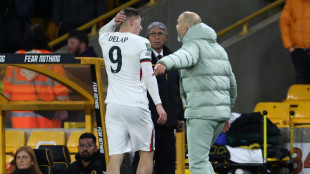
-
 'Non-interventionist' Trump flexes muscles in Latin America
'Non-interventionist' Trump flexes muscles in Latin America
-
Slot defends League Cup selection despite not meeting 'Liverpool standards'
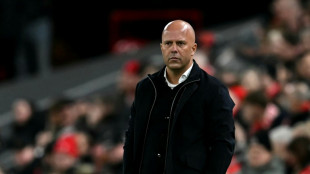
-
 'Poor' PSG retain Ligue 1 lead despite stalemate and Doue injury
'Poor' PSG retain Ligue 1 lead despite stalemate and Doue injury
-
Liverpool crisis mounts after League Cup exit against Palace
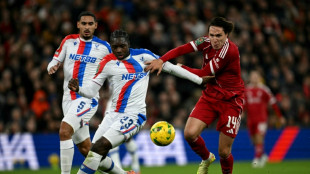
-
 Kane scores twice as Bayern set European wins record
Kane scores twice as Bayern set European wins record
-
Radio Free Asia suspends operations after Trump cuts and shutdown

-
 Meta shares sink as $16 bn US tax charge tanks profit
Meta shares sink as $16 bn US tax charge tanks profit
-
Dollar rises after Fed chair says December rate cut not a given

-
 Google parent Alphabet posts first $100 bn quarter as AI drives growth
Google parent Alphabet posts first $100 bn quarter as AI drives growth
-
Rob Jetten: ex-athlete setting the pace in Dutch politics


Endangered North Atlantic right whales make a stand in Cape Cod
After many hours scouring Cape Cod Bay and a few false alarms, those aboard the Research Vessel Shearwater on a bright April day make their first sighting: three North Atlantic right whales, including a rare mother-calf pair.
The captain cuts the engines and a trio of marine biologists spring into action, rapidly snapping photos and noting markings that can be used to identify individual animals and track injuries -- a vital part of conservation efforts for a species believed to have 336 members.
While the whaling that drove them to near-extinction has long been banned, unintended collisions with ships and entanglements with fishing gear are today the main threats for Eubalaena glacialis, one of the most endangered mammals in the world.
Approaching 60 feet in length and weighing over 70 tons, the North Atlantic right whale is the third largest whale in existence. Their life spans are similar to humans, with individuals living up to a century.
"Unfortunately, since 2010, their population has been decreasing," explains Christy Hudak, the leader of the Center for Coastal Studies' expedition that set off from Provincetown, a historic New England fishing village that is today popular for whale watching and gay tourism.
"We're trying to spread the word regarding these amazing creatures and just how a key species they are in the circle of life."
The CCS crew coordinates with an aerial survey plane, while a vessel from another research group flies mini-drones equipped with cameras over the whales as part of a study on the impact of rope entanglements on their growth rate.
Despite strict ship speed limits of 10 knots in some protected areas, and new rules brought in by authorities to limit the number of ropes between buoys to crab and lobster traps on the seafloor, conservationists worry it's not enough.
The problems are compounded by climate change: as the waters of the North Atlantic warm, a tiny oil-rich crustacean called Calanus finmarchicus that is the whales' main food resource is becoming more scarce in their habitat, which stretches from Florida to Canada.
Cape Cod Bay isn't warming as fast as the whales' more northern waters in the Gulf of Maine, and as a result, it is here, in their traditional feeding and nursing grounds, that the marine giants are now more commonly spotted.
Apart from photography and detailed note-taking, the crew also carry out plankton surveys: casting nets and using water pumps to take samples at various depths for lab analysis.
Knowledge of the composition and density of these zooplankton helps scientists predict peak whale arrivals and departures.
- The 'right' whale to hunt -
Right whales were the favored prey of commercial hunters for more than a millennium -- by the Vikings, Basques, English, Dutch and finally Americans -- who sought their blubber for whale oil and their baleen plates, which they use to filter their food, as a strong, flexible material used in the pre-plastic era.
According to David Laist, an author of a book on the species, their numbers prior to commercial whaling ranged up to 20,000, but by the early 20th century, the species was decimated.
There was just one reliable sighting anywhere in the North Atlantic between the mid-1920s to 1950, Laist writes.
"The early whalers thought of them as the correct whale to catch because they were so valuable, great thick layers of blubber that produced oil that was used in lamps," CCS founder Charles "Stormy" Mayo says, explaining the name.
A baby boom in the 2000s led to a recent peak of more than 483 animals by 2010, but numbers are once more in decline -- and in 2017, the species was rocked by a mass-die off due to a shift to new foraging grounds.
"Fourteen right whales died in a very short period, because they moved into an area in the Gulf of St. Lawrence that was not previously known and was not managed," he said.
That move due to declining prey abundance elsewhere appears to have been caused by climate change, and left the whales highly vulnerable to the collisions and ropes that kill them.
And since the population is already so depleted, even a few deaths are enough to trigger a downward spiral, said Mayo, who was part of the first team to disentangle a whale in 1984. Mayo's own father had hunted pilot whales, and their family has lived in the area since the 1600s.
The whales' calving rate in its southern waters is also down.
While three years is considered a normal interval between births, the current average is three to six years, according to the National Oceanic and Atmospheric Administration.
The stressors placed on females -- including non-fatal rope entanglements and ocean noise from human activities -- are thought to be behind the steep decline.
- Playful calf, and a whale party -
Right whales are distinguished by their stocky, black appearance with no dorsal fins, as well as heads adorned with knobby patches of rough skin called callosities, which are colored white from the tiny "whale lice" (cyamids) that cling to their hosts in what is thought to be a symbiotic relationship.
Following tips relayed by their colleagues in the air, the R/V Shearwater finds more right whales including a playful calf copying its mother, and a huddle that biologists call a surface active group -- an opportunity to socialize.
The whales "are getting together, rolling around touching each other. The main part of it is to mate, but also just to interact with other right whales. It's not always about sex," Hudak says.
Back on land, Hudak says she was encouraged by what she saw over the day: a total of 10 right whales, two mother-calf pairs, and the social group, the "piece de resistance."
The long term future of the species is far from assured, but there is hope.
Technologies are being tested to reduce entanglements -- from weak rope that breaks more easily, to ropeless fishing traps that use floats triggered by remote control to ascend by themselves.
Other ideas include deploying more acoustic monitoring devices on buoys to track the whales' movements better, and quickly respond with ship speed limits in those areas.
Also vital, said Hudak, is increasing public awareness and desire to protect the creatures.
The ship's spotter Sarah Pokelwaldt, a recent graduate doing an internship with CCS, said she was blown away by what for her was her first encounter with calves.
"Being able to see the babies shows a lot of promise for the work that we do. It's really fulfilling to see," she said.
K.Brown--BTB


